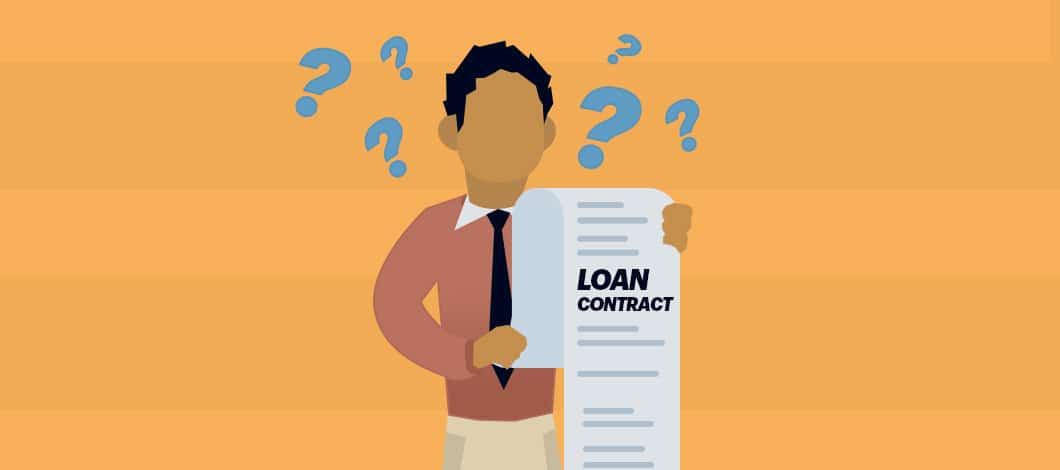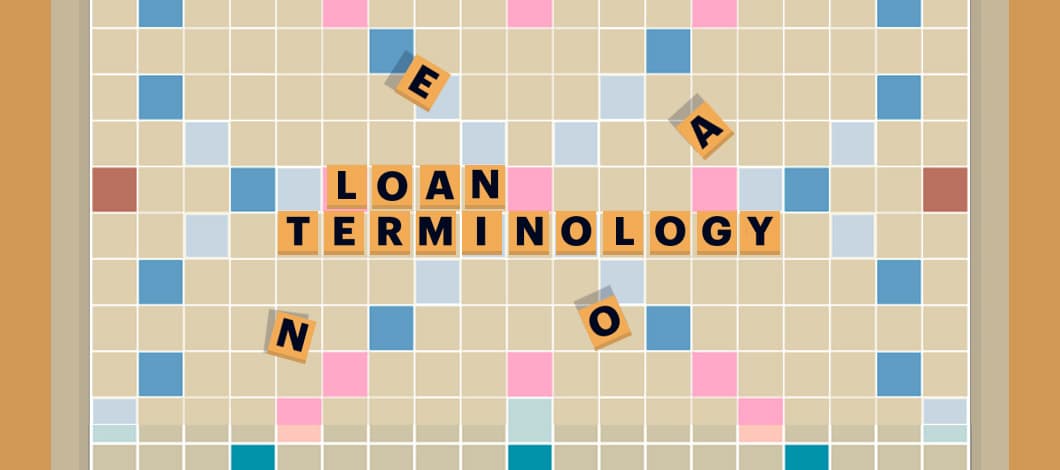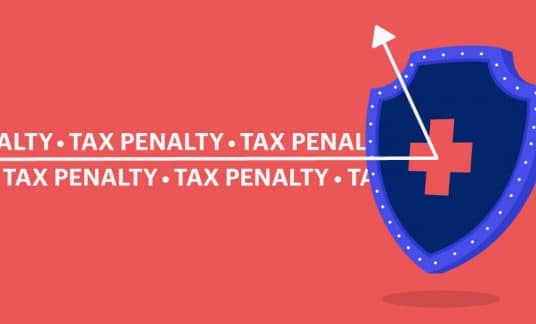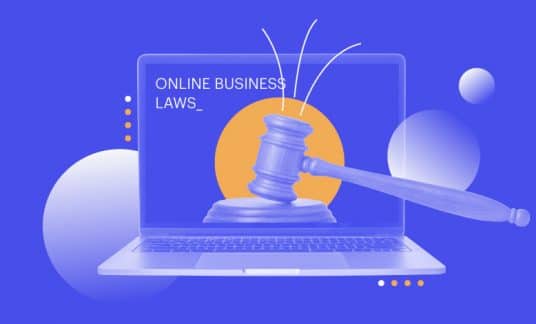The loan terminology used in a financing agreement can seem confusing. But it’s important to understand the terms related to loan provisions before you sign on the dotted line.
Here’s a list of the most important terms for the various parts of a business loan agreement.
1. Annual Percentage Rate
The annual percentage rate is the total cost of the loan over a year. It includes the base interest rate plus other financing fees. For example, many lenders charge a loan origination fee.
2. Borrower
A borrower is a person or corporate entity that has applied for a loan and received the funds. The borrower is obligated to repay the loan.
3. Co-Borrower
In loan terms and conditions, a co-borrower is someone who accepts joint responsibility with another person to pay back a loan. Vendors will check the credit histories of all co-borrowers to approve the loan, and the names of the co-borrowers will appear on the loan agreements.
4. Co-Signer
A co-signer is someone whose credit history may be used to help a person with a lower credit score qualify for a loan. If you co-sign a loan, you are agreeing to pay the outstanding balance in the event the original borrower defaults on the payments.
5. Credit Score
A lender will check your credit score to evaluate the risk of giving you a loan. People with higher credit scores are more likely to get approved and receive lower interest rates.
6. Hard Credit Check
A hard credit check happens when you apply for a loan and the lender checks your credit history with credit-reporting firms. A hard inquiry will have a small negative impact on a credit score for a few months. If you’re applying to several lenders, it’s better to submit all of your applications in a short period of time to minimize the negative impact on your credit score.
7. Soft Credit Check
Soft credit checks are usually for informational purposes, such as inquiries by landlords or employers or preapprovals for credit card offerings. Unlike a hard credit check, a soft inquiry doesn’t affect your credit score.
8. Collateral
In business contract loans, collateral refers to one or more assets belonging to the borrower that a lender can use to secure a loan. These may include vehicles, real estate, inventory and invoices, for example. If the borrower defaults on the loan, the lender can seize the collateral and sell it to help pay off the balance of the loan.
9. Personal Guarantee
Many lenders of loans that are not secured by collateral require a personal guarantee from a business’s partners. This is the individual’s personal promise to repay the business financing borrowed if the business can’t pay its debts.
10. Interest
Interest is the cost of borrowing money. You will pay interest from the time you receive the funds until the loan is completely paid.
11. Principal
In credit agreement terms, the principal of a loan is the amount you borrow from a lender. The lender charges interest on that principal amount.
12. Fixed Interest Rate
A fixed interest rate is an interest rate that doesn’t change for the life of the loan. Those with fixed interest rates usually have fixed payments of principal and interest for the life of the loan.
13. Variable Interest Rate
Some loans charge interest at rates that vary over time. For example, a business loan could have an interest rate set at 2 percentage points over the prime rate, and the rate would change each time there was a change in the prime rate. Another example could be a business loan with the interest rate set at certain percentage points over the London Interbank Offered Rate (LIBOR), but the rate would only be changed on a quarterly basis.
14. Unsecured Loan
An unsecured loan relies solely on the willingness of the borrower to repay the loan. If the borrower defaults, the lender doesn’t have any collateral to seize. However, some unsecured loans do require a personal guarantee or Uniform Commercial Code lien.
15. Secured Loan
A secured loan has collateral as a backup that the lender can seize if the borrower defaults on the loan. As for interest rates, secured loans usually are lower than unsecured loans because they have fewer risks for the lender.
16. Installment Loan
An installment loan is one that you pay back with fixed payments of principal and interest over a specific term. Examples would be loans for automobiles, mortgages and personal loans. Installment loans can have repayment terms from a few weeks up to 30 years in some cases.
17. Nonrecourse Loans
Nonrecourse loans are loans that are secured by specific collateral, such as a piece of real estate. If a borrower defaults on a nonrecourse loan, the lender’s ability to seize assets of the borrower is limited to taking possession of the collateral assigned to the loan. The lender can’t attempt to take possession of other assets belonging to the borrower.
18. Recourse Loans
A recourse loan gives a lender a substantial advantage: If a borrower defaults on a loan secured with collateral, such as a vehicle, the lender can seize the collateral, sell it and apply the proceeds to the outstanding loan balance. If the sale of the collateral wasn’t sufficient to pay off the loan, the recourse provision would give the lender the right to go after and seize other assets of the borrower to pay off the deficit.
19. Loan Agreement
A loan agreement is a document that outlines the terms of the loan and the responsibilities and obligations of the lender and the borrower. It’s important to thoroughly read a loan agreement to be sure you understand all of the terms and requirements.

20. Repayment Plan
A loan repayment plan specifies how a loan is to be repaid. It would state the amount and number of the payments and over what time period.
21. Loan Amortization
Loan amortization is the process of paying off a debt with equal installments over time. A portion of each installment goes to pay interest and reduce the principal balance until the outstanding debt is reduced to zero at maturity.
22. Loan Origination Fee
Some small business loan contracts include a loan origination fee. This is a fee to set up the loan and is in addition to interest. These charges could be called fees for origination, processing or document preparation. They can be charged as a percentage of the loan amount or as a flat rate.
23. Other Fees
Lenders frequently charge fees to set up a loan in addition to a loan origination fee. An appraisal fee for real estate is another example. These fees should be included in the calculation of the annual percentage rate.
Related: Common Loan Fees to Expect When Securing Business Financing
24. Late Fees
Another part of a loan agreement, which must be outlined, is late fees. The lender will charge late fees if you make a payment after the due date.
25. Grace Period
A grace period is a feature of some loan agreements in which the lender allows the borrower to make a payment a few days after the due date without incurring a late fee.
26. Covenants
Some loans may have special agreements that are unique to the situation. For example, a lender may require that the borrower not pledge any assets to another lender or take out additional loans while their loan is outstanding.
27. Borrower Default
A loan default takes place when the borrower fails to make payments in accordance with the loan agreement. Most loan agreements have a few days grace, but if the borrower fails to make payments for several months, the lender will begin to take steps to collect the debt and report the delinquency to the credit-ranking firms.
28. Default Events
A default event is described in the loan agreement and allows a lender to demand full payment of the loan balance owed before its due date. Examples of default events are defaulting on payments, violations of loan covenants and filing for bankruptcy protection.
29. Default Interest
The default interest rate comes into effect when the borrower has missed several loan payments. It is a higher rate than the loan rate stated on the agreement and is intended to compensate the lender for the lost investment opportunity of missed payments.
30. Loan Deferment
If you’re having difficulties making payments on your loan, your lender may grant you a loan deferment. If a deferment is approved, you would be able to defer loan payments for a certain period of time without the loan being declared in default. This would allow you to solve your temporary cash-flow problems and let you resume payments without penalties.
31. On Demand
A demand loan is when a lender can require that a loan be repaid in full at any time. The borrower also has the option to repay the loan at any time without any prepayment penalty. Borrowers use demand loans to fund short-term working capital needs.
32. Prepayment Penalty
Some loans may impose a prepayment penalty if you pay off the loan balance before the loan’s due date. Lenders make a profit on the interest they charge on a loan, and a prepayment penalty is intended to make up for the interest the lender loses if you prepay the loan.
33. Jurisdiction
In the event of default or other legal issues, the loan agreement will usually specify that the governing laws will be those of the jurisdiction where the lender resides.
34. Severability
Severability is a contractual term that states if one portion of a contract is found to be unenforceable or illegal, the remaining provisions of the contract are still valid and applicable.











